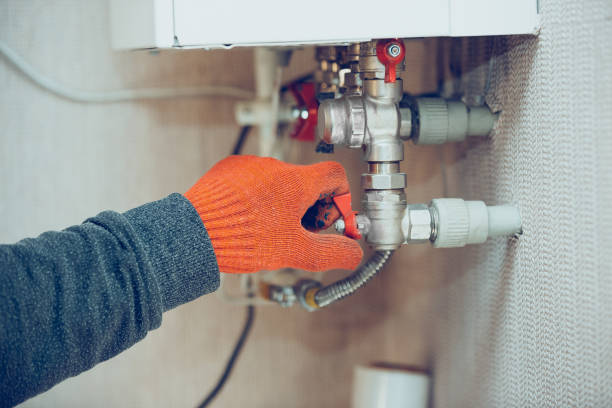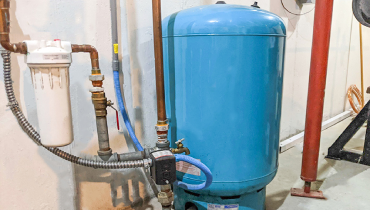Practical Strategies for Managing Low Water Pressure in Your Home
Practical Strategies for Managing Low Water Pressure in Your Home
Blog Article
In this article further down you can get a bunch of first-rate resources in relation to Dealing with Low Water Pressure in Your Home.

Low water stress in your house can be a discouraging trouble, affecting everything from bathing to washing meals. If you're experiencing weak water flow, there are numerous feasible reasons and options to explore. In this guide, we'll go over typical factors for low tide pressure and useful steps to resolve the problem properly.
Introduction to Low Tide Pressure
Low water stress happens when the circulation of water from your taps, showers, and other components is weak than common. This can make daily jobs much more tough and less effective. Understanding the sources of low water pressure is important to locating the best option.
Common Causes of Low Water Stress
Faulty Stress Regulators
Pressure regulators are accountable for preserving constant water pressure in your house. If they malfunction, it can result in low tide stress or irregular flow throughout the house.
Community Supply Of Water Issues
Sometimes, the problem lies outside your home. Community water supply concerns, such as main line leakages or maintenance work, can momentarily minimize water stress in your location.
Pipeline Obstructions
In time, pipes can end up being obstructed with natural resource, sediment, or debris, limiting the circulation of water. This is a typical problem in older homes with galvanized steel pipes.
Rust
Corrosion within pipelines can result in leakages and reduced water stress. Rust buildup can constrict water flow, particularly in maturing plumbing systems.
Exactly How to Identify Low Tide Stress
Examining Pipelines
Examine noticeable pipes for indications of leaks, rust, or clogs. Take notice of any kind of uncommon sounds, such as banging or rattling pipes, which might show issues within the plumbing system.
Consulting with a Plumber
If you're incapable to pinpoint the source of low water pressure, think about hiring an expert plumber to carry out an extensive inspection. They can determine underlying concerns and suggest ideal solutions.
Examining Taps and Fixtures
Beginning by testing the water stress at different taps and fixtures throughout your home. If the issue is isolated to specific areas, it might indicate localized troubles.
DIY Solutions to Fix Low Water Pressure
Flushing Hot Water Heater
Sediment build-up in the hot water heater can restrict flow and reduce efficiency. Purging the container regularly assists eliminate sediment and keep ideal performance.
Examining Stress Regulatory Authority
Make certain that the stress regulatory authority is functioning correctly. Adjusting or changing the regulatory authority can aid bring back correct water stress throughout your home.
Cleansing Aerators and Showerheads
Mineral deposits can accumulate in aerators and showerheads, lowering water flow. Get rid of and cleanse these parts routinely to enhance water stress.
Clearing Up Clogs in Pipeline
For minor clogs, attempt making use of a plumbing snake or chemical drain cleaner to clear obstructions in pipes. Be cautious when utilizing chemicals and comply with safety and security guidelines.
When to Call an Expert Plumber
If DIY efforts fail to resolve the problem or if you suspect significant plumbing issues, it's finest to look for support from a certified plumber. They have the know-how and tools to deal with intricate issues securely and effectively.
Preventive Measures to Preserve Water Pressure
Mounting a Stress Booster
Take into consideration mounting a pressure booster pump to enhance water pressure in areas with constantly reduced circulation. This can be especially beneficial for multi-story homes or residential properties with high-demand fixtures.
Surveillance Water Use
Bear in mind water use habits and stay clear of ill-using the plumbing system. Simple modifications, such as shocking showers and washing tons, can aid maintain sufficient water stress.
Regular Maintenance
Arrange regular maintenance for your plumbing system to prevent problems such as corrosion, leaks, and blockages. Dealing with minor problems early can help avoid even more substantial repair work in the future.
Final thought
Handling low water stress can be frustrating, but recognizing the underlying reasons and applying suitable services can restore optimal circulation throughout your home. Whether it's cleansing aerators, evaluating pipes, or consulting with a plumber, taking positive steps can ensure a steady supply of water for your day-to-day demands.
FOUR WAYS TO FIX LOW WATER PRESSURE NOW
Turning on a shower or faucet only to find the water comes out in a sad, slow drizzle is never a good feeling. How exactly are you supposed to wash a pan or take a quick shower when it takes 10 minutes just to rinse off a little soap? The good news is that when your water pressure is bad, there's always a cause: typically one that can be easily fixed. Here are some of the most common causes of low pressure and what you can do to fix the issue:
DEBRIS AND MINERAL DEPOSIT BUILDUPS
If you notice low water pressure from just one or two of the fixtures in your house, the problem likely has to do with debris buildup. Water is full of minerals and other debris, all of which can accumulate in your pipes and on your fixtures. This can cause a blockage that affects how much water flows through. To fix this, try filling a small plastic bag with white vinegar, and use a rubber band to hang it around your showerhead or faucet. Let the head of the fixture soak for a few hours, and the vinegar should loosen the deposits.
WATER LEAKS
Leaks are another common cause of low water pressure. If water is flowing out of your plumbing through a hole or crack before it can reach your fixture, the pressure coming out of the faucet or showerhead will be lower. A plumbing professional is your best bet for finding and repairing a leak in your water supply pipes.
Leaks are another common cause of low water pressure. If water is flowing out of your plumbing through a hole or crack before it can reach your fixture, the pressure coming out of the faucet or showerhead will be lower. A plumbing professional is your best bet for finding and repairing a leak in your water supply pipes.
A VALVE ISSUE
If you have low water pressure throughout your home, check your main shut-off valve to make sure it's completely open. You may also want to see if there's a pressure-reducing valve installed. If there is, have a plumber help you adjust the settings to get the pressure you're looking for.
OTHERS USING WATER
Believe it or not, your low water pressure could be caused by your neighbors. If you notice low pressure at certain times of day, it may be because you and the people living next to you have similar schedules - when everyone is showering at the same time, the pressure will be lower in every home. Low pressure throughout the neighborhood may also be caused by an issue with your municipal water supply. If that's the case, call the supplier to see if they're working on the issue.
https://www.rotorooter.com/blog/water-leaking/low-water-pressure-fixes/

I hope you enjoyed our article on Dealing with Low Water Pressure in Your Home. Thank you for taking time to browse our content. Do you know another person who is sincerely interested in the topic? Be sure share it. We love reading our article about 9 Reasons for Low Water Pressure in Your House.
Call Today Report this page